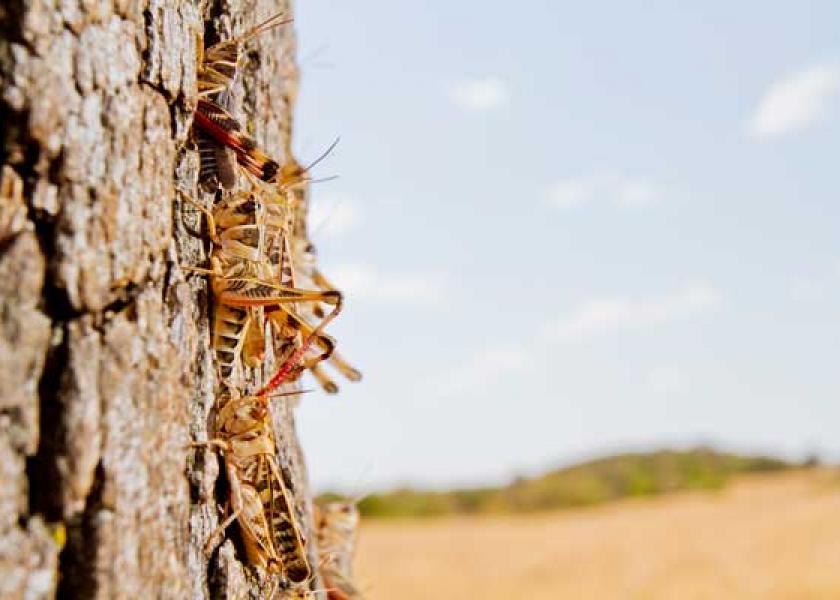Scout and Treat Fields for Grasshoppers

Source: The Samuel Roberts Noble Foundation
From the Old Testament to Pixar’s A Bug’s Life, grasshoppers have always played the villain.
As summer approaches, agricultural producers in the Southern Great Plains should expect this particular insect to play its usual rogue role. Without a cold winter or cool spring, much of the grasshopper population has lived through the early stages of its life cycle. Agricultural experts at The Samuel Roberts Noble Foundation say pastures and fields are likely to be bustling with young grasshoppers (nymphs) that are ready to do damage.
"Grasshoppers can quickly devastate a field," said David Annis, soils and crops consultant at the Noble Foundation. "Grass and forage producers need to be aware that this will be a potential problem this season."
Nymphs favor warm and dry conditions like the climates found in Oklahoma and Texas during the spring and summer. According to the National Oceanic and Atmospheric Administration (NOAA) Climate Prediction Center (www.cpc.ncep.noaa.gov), the Southern Great Plains can expect a 40 percent chance of warmer and most likely drier conditions in the next three months.
Grasshoppers and nymphs share their main source of energy – forages – with ruminant animals such as cattle, meaning they are likely to populate grass pastures and hay fields. Having grasshoppers or nymphs present in fields creates competition with cattle, and these insects have the upper hand.
The economic threshold for grasshoppers is seven to 10 insects in a square yard. That size population can consume as much forage in 16 hours as one cow. If infestation is not handled properly or in time, grasshoppers can grow over an inch in length by the summer and consume 50 percent of their body weight, causing devastation for forage production.
"Their presence, coupled with the ramifications from drought conditions and warmer temperatures this year, can greatly decrease a producer’s ability to effectively utilize pastures for grazing," Annis said. "Now is the time for producers to scout pastures and discuss potential treatment options with their local agricultural professional. It would also be good to work with neighbors when treating for grasshoppers. This joint effort will lengthen the life and effectiveness of treatments."







